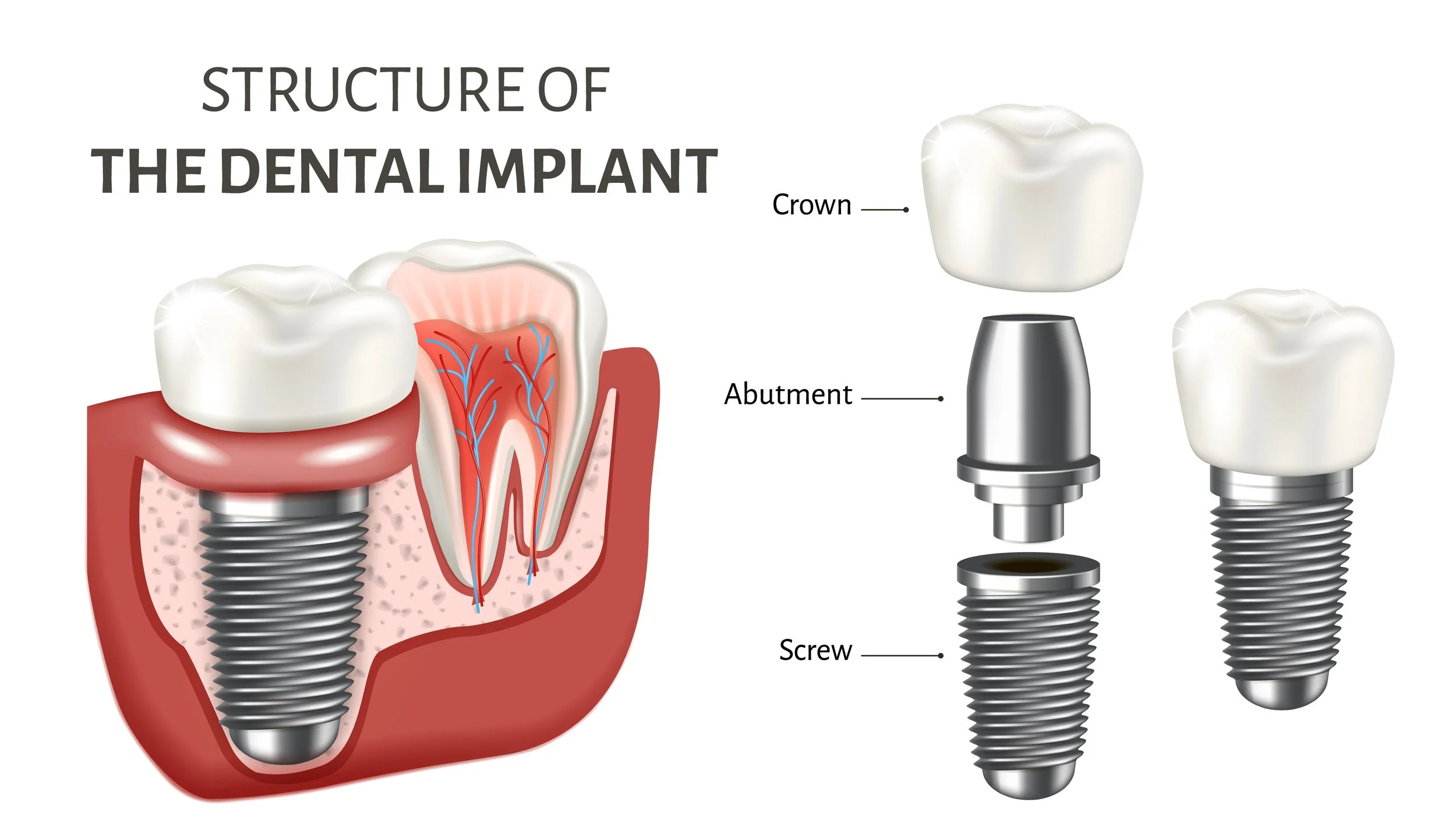What’s the real cost of one dental implant? (Part 1)
When I google “How much does a dental implant cost for one tooth?”, the first entry that appears is from a dental office in Inglewood, California, near the Los Angeles Forum. It says, “$749 Dental Implant Deal – Free 3D CT Scan ($500 value).” But that’s not the whole picture because the implant itself is useless without the accompanying crown.
Another advertisement, albeit less misleading, from Beverly-Hills-Dentist says “$1999 Dental Implant Includes – Implant + Abutment & Crown.” A couple thousand dollars may sound too good to be true, particularly if your dentist has told you a single implant may be double, or triple, that amount.
You may have heard that a dental implant is the closest substitute to a natural tooth. But as a consumer, how can you accurately determine the cost of an implant? How do you begin to evaluate exactly what you’re getting when you don’t understand the terminology? Surely there must be hidden costs…
Let’s begin with some basics about dental implants:
An implant is a titanium, or zirconia, screw post that is embedded into your jawbone to replace what is in essence the root of a natural tooth.
An abutment, either custom made or from a manufacturer’s prefabricated assortment, represents the remnant of natural tooth onto which the crown is attached. An abutment is held in place with a small screw.
An implant crown replaces the natural tooth. The implant crown is cemented onto the abutment. Sometimes the abutment and crown are combined into one piece and secured onto the implant with a screw.
Many factors influence the cost of an implant.
Some you may have thought of yourself, such as geographic location. The implant will cost more in New York City than in Tulsa, Oklahoma. Others require a certain amount of dental knowledge. Hopefully I can share enough so you can ask the right questions.
The implant manufacturer
There are probably a hundred implant manufacturers but only a handful of well-known and well-regarded ones. Even if ownership has changed or evolved, these companies have been around for decades. This means your chances of getting a spare part will be greater, should you need it in the future. Some even warranty their product. All have research and development branches to explore improvements and innovations.
They also employ technical support teams to provide training for dentists and laboratory technicians. Some even go into the field to assist your dentist with an unfamiliar product or technique. When I replaced an implant crown on my mother atop her older model implant, not only did the manufacturer representative provide the outdated tools, he was on site with me every step of the way.
Because of their reputations, more dentists use these manufacturers, which means that the pool of dentists familiar with the products will be larger. Further, the tools required are propriety to each manufacturer and a dentist cannot invest in the costly and necessary tools for a bevy of manufacturers. So the more well-known and highly regarded the implant company, the greater the likelihood that any dentist will be able to fix a problem with your implant.
Typically an implant from one of these companies can run four to five times more than from a new or obscure manufacturer. Granted, the actual titanium may be the same, but the differences are significant. And well worth it.
Where is the implant located in your mouth?
An implant in the lower back area of the mouth is, to borrow a sports term, a “slam dunk” for many reasons. The bone in the lower jaw is of higher quality and density than the upper. If the implant is placed too high or too low, any cosmetic deficiencies will be less visible and obvious. The color of the crown doesn’t have to match perfectly; in fact, it may even be metal.
Contrast that to an implant in the upper front tooth area. Our eyes are naturally drawn to that spot and, even if we’re not aware, we can detect differences in the appearance of the two upper front teeth.
A good match starts with the foundation – the implant placement. Even though the implant is buried under the gum and not visible, its position is crucial and strongly affects the esthetic outcome of the crown. The other determinant are the people making the crown – the lab technician and your dentist. In my experience, very few lab technicians can successfully match and recreate the color subtleties of a single front tooth. These skilled professionals command – and deserve – a higher fee. And what about your dentist? In addition to excellent clinical skills, does she look at your front tooth with an artist’s eye?
That front implant and crown are much harder to get right – and it may cost you more.
The geographic location
Depending on where you live in the U.S., the cost of living can vary greatly. So, too, with dental care. Even within the same state, urban and rural areas differ in terms of costs.
According to Delta Dental, the largest dental insurer in the country, an implant can range from $7,115 to $9,550 in New York City, whereas in St. Louis, the same procedures run between $5,250 to $6,109. https://www.deltadental.com/us/en/member/cost-estimator.html (keep hitting Reload if link doesn’t work) Within a city proper and its environs, the cost can differ by several hundred dollars, as is the case with San Francisco and South San Francisco. Note that the Delta Dental fees are calculated based on zip codes and generally run 10 to 20 percent lower than the fee-for-service (FFS) prices a dentist may charge someone without insurance. Anecdotally, when I worked in Peer Review – a program for conflict resolution between patients and dentists – I had the opportunity to review lots of patient records. I saw little difference between what was charged in urban Los Angeles versus the farming communities of the San Joaquin Valley.
Even so, what accounts for this variation in pricing if the parts and procedures are identical? For starters, the rent your dentist pays is orders of magnitude higher in Manhattan than St. Louis. Same with the employee salaries, and even the parking rates. Your dentist himself has higher living expenses.
Some patients have resorted to traveling overseas or to Mexico for their dental needs, especially pre-COVID. While an implant with crown may cost $1,635 in Cancun, Mexico, this strategy is not without risks. At the forefront is the obvious: What if something goes wrong after you’ve returned home?
Which doctor is performing the implant procedure?
Your dentist will likely be doing the implant crown, but there’s also the possibility that she may be extracting the diseased tooth and placing the actual implant. Or she might refer you to a specialist such as an oral surgeon or a periodontist. Chances are that service will cost you more at the specialist.
The decision to refer depends on the complexity of the situation and the experience and confidence level of your general dentist. The same person making this decision stands to benefit from it economically, but at the same time, your dentist doesn’t want to lose you as a patient by overstepping his skill set.
The need for additional procedures
Most implant advertising applies strictly to the implant and corresponding crown. But there’s a host of additional procedures that may be necessary for the successful outcome of your implant. If you’re already faced with sticker shock, the costs of these secondary procedures will compound that feeling.
Before you begin this treatment, ask your dentist for a comprehensive breakdown of procedures and related costs.
So what are the individual procedures? In the next installment, I will cover this topic in detail. Stay tuned…





